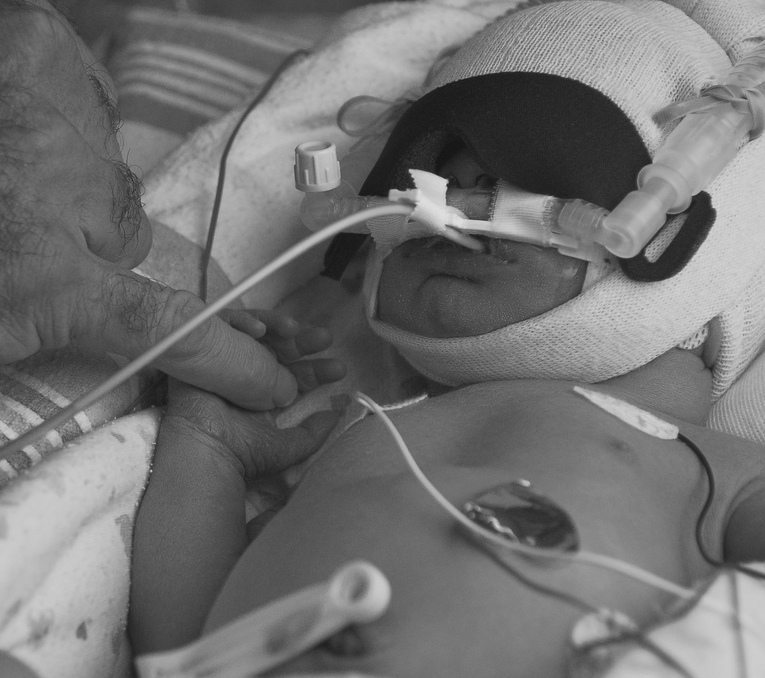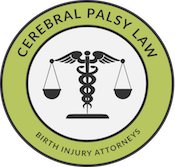Michigan Birth Injury Attorneys Handling Cases Related to Hypoxic Ischemic Encephalopathy (HIE) and Infant Seizures
The birth injury lawyers at Michigan Cerebral Palsy Attorneys are committed to securing compensation for the victims of medical malpractice with lasting injuries and disabilities from hypoxic ischemic encephalopathy (HIE) and seizures. Throughout this page we’ll discuss the relationship between neonatal seizures and hypoxic ischemic encephalopathy and explain how instances of medical malpractice can lead to these severe, dangerous birth injuries.
If hypoxic ischemic encephalopathy, neonatal seizures, or a different traumatic birth injury caused your loved one’s permanent injury or disability, we urge you to reach out for legal help. Our Michigan hypoxic ischemic encephalopathy and seizure lawyers will provide you with a free case review, answer your questions, and inform you of your legal options. Should we take your case, our no fee policy ensures you will not be charged unless we win or settle your case. To contact our Michigan birth injury law firm, please call us toll-free at (888) 592-1857, fill out this online contact form, or press the following button:
Hypoxic Ischemic Encephalopathy (HIE) and Seizures
What Is Hypoxic Ischemic Encephalopathy?
Hypoxic ischemic encephalopathy (HIE) , also known as neonatal encephalopathy (NE) or birth asphyxia, is a type of neonatal brain injury caused by fetal oxygen deprivation around the time of delivery. In order to better understand hypoxic ischemic encephalopathy, it helps to dissect the term itself:
, also known as neonatal encephalopathy (NE) or birth asphyxia, is a type of neonatal brain injury caused by fetal oxygen deprivation around the time of delivery. In order to better understand hypoxic ischemic encephalopathy, it helps to dissect the term itself:
- Hypoxic refers to hypoxia, a condition characterized by insufficient oxygen levels in the blood.
- Ischemic refers to ischemia, a condition characterized by a decrease in oxygenated blood flow to the baby’s brain.
- Encephalopathy refers to the brain damage resulting from hypoxia and ischemia.
Hypoxic ischemic encephalopathy is the most common cause of infant seizures—roughly 80% of neonatal seizure cases are recognized as HIE-related. Seizures, which are often the first clinical sign that a hypoxic ischemic event occurred, are important indicators that medical professionals should diagnose HIE and begin immediate treatment.
What Are Infant Seizures?
Seizures are produced when nerve cells in the brain become disturbed by uncontrolled electrical activity. They may cause conditions and symptoms including loss of consciousness, convulsions, and other brain-related disturbances. Neonatal seizures can damage the brain and/or worsen existing brain injuries, so it is crucial for medical professionals to swiftly diagnose seizures and begin treatment. Some clinical signs used to detect seizure activity in a baby include the following:
- Breathing abnormalities such as apnea
- Staring
- Turning of the head and/or eyes to one side
- Bending or stretching movements
- Muscular tightening or stiffening
- Repetitive movements of the face and mouth
- Isolated or repetitive jerking movements
- Pedaling movements
How Does HIE Cause Infant Seizures?
As we mentioned in the previous section, hypoxic ischemic encephalopathy is a type of neonatal brain injury resulting from a shortage of oxygen and blood in a baby’s brain. When hypoxia and ischemia limit oxygen and blood flow to the brain, they also cause a decrease in cerebral energy production. As a result, brain impulses become excessively stimulated and seizures occur. Changes within the brain cause an increase in the neurotransmitter glutamate, which excessively stimulates the cortex. Secondly, the brain experiences a shortage of an important inhibitory neurotransmitter. Finally, changes in energy-producing cell membranes occur.
Hypoxic Ischemic Encephalopathy (HIE) and Seizures: Causes and Risk Factors
Causes and Risk Factors for Infant Seizures
Besides hypoxic ischemic encephalopathy, some of the other causes and risk factors for infant seizures include fetal stroke, intracranial hemorrhages (brain bleeds), fetal distress, umbilical cord compression, nuchal cords, uterine rupture, placenta previa, infant and maternal infections, and metabolic problems.
Causes and Risk Factors for Birth Asphyxia (Hypoxic Ischemic Encephalopathy)
When left undiagnosed or untreated, hypoxic ischemic encephalopathy can lead to severe and permanent injuries and disabilities including death, infant seizures, cerebral palsy (CP), periventricular leukomalacia (PVL), intellectual and developmental disabilities (I/DD), and more. Medical professionals are required to carefully and thoroughly prevent, diagnose, treat, and control any of the possible causes and risk factors for hypoxic ischemic encephalopathy. Some of HIE’s many causes and risk factors include the following:
- Premature birth
- Premature rupture of membranes (PROM)
- Post-term pregnancy
- Nuchal cords
- Umbilical cord compression and prolapse
- Placental abruption
- Uterine rupture
- Intrauterine growth restriction (IUGR)
- Preeclampsia
- Maternal infection
- Macrosomia
- Gestational diabetes
- Fetal malpresentation (such as breech or face presentation)
- C-section mistakes (delayed emergency C-section or failure to offer C-section)
- Fetomaternal hemorrhages
- Brain bleeds (intracranial hemorrhages)
- Mistakes with forceps or vacuum extractors
- Uterine hyperstimulation, strong contractions, and labor that fails to progress from the misuse of Pitocin or Cytotec
- Fetal stroke
Hypoxic Ischemic Encephalopathy (HIE) and Seizures: Diagnosis and Treatment
Diagnosing and Treating Neonatal Seizures
Because neonatal seizures can worsen an existing infant brain injury, it is crucial that medical professionals quickly diagnose and treat seizure activity in a newborn. Additionally, leaving seizures uncontrolled may lead to more seizure. Damage caused by a seizure will depend on the seizure’s duration, severity, frequency, cause, and degree of brain involvement. Common clinical signs used to detect and diagnose seizure activity in a baby include a low Apgar score, acidosis, and the need for infant ventilation. Medical professionals must treat any underlying causes for infant seizures and perform brain scans. EEGs, MRIs, and CT scans may help determine the cause of a baby’s seizures. Once infant seizures are diagnosed, the infant should begin therapy and/or epilepsy medication.
Diagnosing and Treating Hypoxic Ischemic Encephalopathy
Common clinical signs suggesting the presence of a hypoxic ischemic event include seizures, feeding challenges, abnormal consciousness, academia in the umbilical cord blood, organ problems or failure, hypotonia, the absence of brain stem reflexes, coma, a low Apgar score, and the need for infant resuscitation. Neuroimaging is crucial in the diagnosis and evaluation of hypoxic ischemic encephalopathy.
In order to manage hypoxic ischemic encephalopathy, medical professionals in the neonatal intensive care unit must maintain proper infant respiration, maintain blood flow to the brain and organs, control seizure activity, and maintain normal metabolic stasis.
Currently, the only known treatment for hypoxic ischemic encephalopathy is the hypothermia treatment. Also known as brain cooling, the hypothermia treatment reduces brain damage in infants who suffered hypoxic ischemic encephalopathy around the time of birth. Hypothermia treatment consists of lowering a newborn’s body temperature to around 91 degrees Fahrenheit for roughly 72 hours. Reducing the newborn’s body temperature allows metabolic rate to slow and ultimately prevent further cellular injuries caused by hypoxia and ischemia. To learn more about hypothermia treatment and its indications, please visit this page.
Neonatal Seizures as a Sign of Birth Injury and HIE
In the following video, Andrea Shea from our obstetrical nursing staff explains neonatal seizures and how they are often the earliest indicators of birth injury and HIE. To read the full video transcript, please visit this link.
Infant Seizures and Hypoxic Ischemic Encephalopathy (HIE) from Medical Malpractice
Michigan Lawyers Representing Victims of Medical Malpractice with Injuries from Hypoxic Ischemic Encephalopathy (HIE) and Seizures
Because hypoxic ischemic encephalopathy (HIE) and infant seizures are so dangerous to a newborn’s health, medical professionals are obligated to carefully and accurately avoid them. Failure to monitor both the mother and baby throughout pregnancy, labor, and delivery and to follow standards of care is negligent and, when negligence causes an injury to the mother or baby, it is medical malpractice.
If you believe your loved one suffered hypoxic ischemic encephalopathy (HIE) and seizures due to medical malpractice, contact Michigan Cerebral Palsy Attorneys today—our lawyers have decades of experience specifically handling cases related to hypoxic ischemic encephalopathy (HIE) and seizures. Our team consists of legal and medical professionals with the knowledge and experience necessary to fight and win birth injury cases. We encourage you to reach out to our Michigan hypoxic ischemic encephalopathy (HIE) and seizure lawyers in any of the following ways:
Call our office toll-free at (888) 592-1857
Complete our online contact form here
Related Reading from Michigan Cerebral Palsy Attorneys
- Information on Hypoxic Ischemic Encephalopathy:
- Hypoxic Ischemic Encephalopathy Information
- Infographic: HIE
- Hypothermia Treatment & Hypoxic Ischemic Encephalopathy
- Hypoxic Ischemic Encephalopathy (HIE) and Nuchal Cords
- Hypoxic Ischemic Encephalopathy (HIE) and Uterine Rupture
- Hypoxic Ischemic Encephalopathy (HIE) in Twins and Multiples
- Hypoxic Ischemic Encephalopathy (HIE) from the Misuse of Pitocin & Cytotec
- Our Law Offices:
- Blogs:
